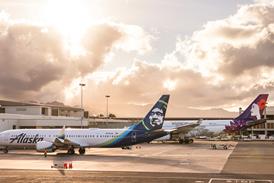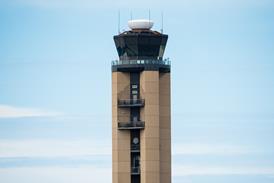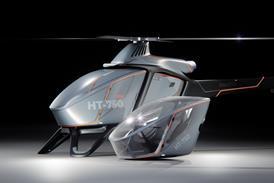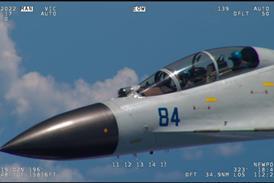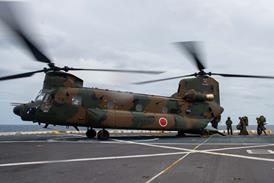Michael Gerzanics/Seattle
Before my visit to Kenmore Air, my seaplane experience was limited to two flights, both on assignment for Flight International.
The first was in a de Havilland Twin Otter in the US Virgin Islands, hosted by Seaborne Airlines. That turbine-powered aircraft sported conventional floats and seemed at home in the shallow waters surrounding St Croix.
The second flight was in a Bombardier 415 amphibian, operated by the province of Ontario, in which I was able to practise scoop and drop operations, essential to fight forest fires. The aircraft was a joy to handle on Lake Hamilton, a body of water between the USA and Canada.
Kenmore Air operates eight piston DHC-2 Beavers, two turbine Beavers and six DHC-3T Otters. For my familiarisation flight we would fly one of the piston Beavers. The Beaver, perhaps the world's most recognisable "bush plane", was designed after the Second World War to tackle the needs of the Canadian back-country.
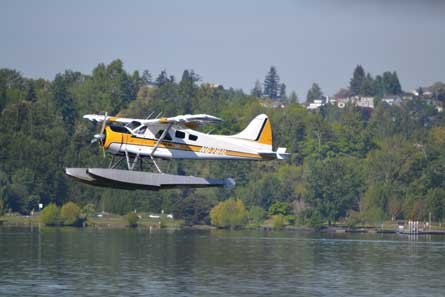 |
|---|
© John Croft |
Motoring over scenic waters |
A huge commercial success, more than 1,600 Beavers had been delivered when production ceased in 1967. The Beaver was designed to be equipped with both floats and skis, but my first experience with the type was in a wheeled Beaver as a student at the US Air Force test pilot school.
Having learned to fly in tricycle-gear aircraft, I initially found its tail dragger stance and radial engine intimidating. While my recollections of that flight have faded over the intervening 30 years, I remembered that once airborne it was a docile and honest aircraft that required a bit of footwork to keep in co-ordinated flight. On the ground I found the Beaver easier to handle than a Pitts S2, a type I had flown several times with an air force colleague.
While a stock Beaver is a capable aircraft, a Beaver on floats is a different animal. Adding floats to an aircraft limits its ultimate performance capabilities while at the same time liberating it from runways and terra firma.
Kenmore's Beavers are mounted on Edo floats. The all-aluminium equipment, each with nine compartments, are sized to provide flotation of 180% of the aircraft's maximum allowed gross weight. Kenmore liked the Edo float so much, it bought the company in 1998 and now manufactures floats for its own and retail customer use. The Edo 4930 float installation accounts for 151kg (333lb) of the Beaver's empty weight, which ranges from 1,573kg to 1,673kg for Kenmore's seaplanes.
Kenmore is a Federal Aviation Administration-authorised repair station and an expert in Beaver maintenance and modifications. In an effort to enhance its operations it has made numerous modifications to the Beaver, earning 23 FAA supplemental type certificates for the aircraft. The Beaver's factory two-bladed propeller has been replaced with a three-bladed 243cm (95in) diameter Hartzell unit.
NOISE REDUCTION
In addition to giving better performance, it significantly reduces cabin noise and vibration levels. As well as their weight and attendant impact on performance, floats typically degrade the handling qualities of an aircraft. The vertical surface area of the float forward of the centre of gravity, degrades directional stability. Initially, a ventral fin was added to the Beaver, below its vertical stabiliser.
 |
|---|
© John Croft |
Kenmore liked the Edo float so much, it bought the company in 1998 |
Kenmore's early experience with this arrangement showed it to be unsatisfactory during water operations, as strong winds would cause the aircraft to "weathervane" while on the water. The low-mounted fin was also vulnerable to damage from some of the high docks from which Kenmore operated. Its innovative solution was to install small "sea fins" on the ends of the horizontal stabiliser. Their small size help helped reduce weathervaning caused by cross winds, yet as speed increased they provided the needed enhancement to directional stability.
From a usability standpoint perhaps the most significant STC on the Beavers is an "upgross" kit. Developed by Wipaire, another seaplane float company, this modification package increases maximum gross weight from 2,436kg to 2,540kg. The 122kg increase in usable load allows Kenmore to carry more passengers and cargo, directly enhancing economics.
Accompanying me on my preview flight in "Kenmore Beaver" N6781L was Kenmore Air's chief pilot John Gowey, who had more than 13,000h in seaplanes, all with Kenmore.
SWIM AROUND
Perhaps the trickiest part of the flight was the pre-flight "swim-around". The left side of the Beaver was tied to the dock, allowing access to the cockpit. After ensuring the magnetos were off, we started the inspection by examining the left float. A hand bilge pump was used to empty the float of water, which at 3.6kg/3.79 litres (1USgal) can adversely affect performance.
Next, the water rudder, at the aft end of the float, and its control and retraction cables were inspected. Inspection of the left wing and empennage was routine, with Gowey pointing out the sea fin. The Beaver was then untied and with Gowey's help we pushed the nose away from the dock allowing us to spin it around while we held on to the horizontal stabiliser.
More than one pilot has been pulled into the water or forced to let go of the seaplane due to a poorly executed pirouette manoeuvre. With Gowey's help I stayed nice and dry, tying the right float to the dock. Inspection of the right side was like that of the left.
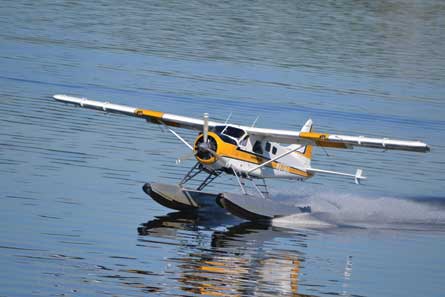 |
|---|
© John Croft |
Landing on water can be tricky on a calm day as there are no visual clues on the surface |
Access to the cockpit is through the right-side passenger door, and once strapped in the left seat, Gowey pushed the Beaver away from the dock and jumped on to the right float. He clambered into the cockpit and took the right seat. Before our arrival, the Beaver had been warmed up during the taxi from the water ramp to the dock, and starting the 485hp (360kW) Pratt & Whitney R-985 Wasp was a snap.
The day was ideal: winds were calm and the sky clear. A slow taxi out of the dock area to an open area for take-off allowed the Wasp Junior radial engine to reach its operating temperature, as indicated by oil temperature above 40C (104F) and cylinder head temperature above 100C. The hydraulic wing flaps, powered by a lever between the front seats, were pumped down to the take-off position.
Moving at a little over 4kt (8km/h), the weight of the seaplane, in a nearly level attitude, was being supported by the entire length of the floats in the idle or displacement position.
In an open part of the lake I retracted the water rudders, actuated by a manual cable and pulley system. A take-off power setting of 34in manifold pressure, just below the maximum of 36.5in, was set with the centre panel mounted throttle, while propeller RPM was set to 2,300.
 |
|---|
© John Croft |
Access to the cockpit is through the right-side passenger door |
A moderate amount of right rudder, subjectively less than that required for a wheeled Beaver, was needed to keep the seaplane pointed straight ahead. Holding full aft yoke pressure, the Beaver accelerated in a nose-high attitude. Soon the Beaver's floats were in a plowing position, a high drag transitional phase as the seaplane picked up speed. At about 35-45kt, I relaxed yoke back-pressure as the floats transitioned to the step, and the Beaver settled into a very slight nose-high attitude. At about 52kt the Beaver flew off the water. Once the aircraft was airborne, forward yoke pressure was needed to level off and accelerate to 78kt, a good climb speed. A crank on the overhead panel was used to trim off yoke pressures as the flaps were pumped up and a gentle climb established.
PRESSURE
Power was set to 30in manifold pressure and propeller RPM reduced to 2,000 for a climb to 1,000ft (300m) above ground level. A normally aspirated constant speed propeller aircraft is usually flown "square", where RPM and manifold pressure are nearly the same. The supercharged Wasp Junior's manifold pressures were higher than I was used to, as most of my piston experience was in normally aspirated aircraft.
 |
|---|
© John Croft |
Mike Gerzanics (right) with Kenmore Air's cheif pilot John Gowey |
Rate of climb was leisurely as we flew south down Lake Washington towards Seattle. Shortly after levelling off we were joined by a second Beaver, flown by Chuck Perry, assistant chief pilot for Kenmore Air. The seaplane community is small. Perry had once flown for Seaborne Airlines, the US Virgin Island airline that afforded me my opportunity to fly a Twin Otter on floats. John Croft, Flight International's Americas editor, was on board the second Beaver and used it as a platform to take the accompanying photographs.
While joined up with the photo aircraft we cruised at speeds varying between 78kt and 100kt. Numerous turns of to 30° angle of bank were done to keep us over the desired working area. Aileron forces were fairly light and I found the rudder to be very effective. As I had found when I flew the Douglas C-47 last summer, turns were accomplished primarily with rudder, and co-ordinated with aileron. The ceiling-mounted rudder trim crank readily allowed me to trim out propeller-induced yaw tendencies. While the cabin was by no means quiet, the David Clark headsets greatly muffled the noise and the voice-actuated intercom made inter-cockpit communications at normal voice levels easy.
The photo aircraft broke away from us as we next descended to try a couple of landings on Lake Washington's now smooth surface. Smooth water indicates calm winds, and while appealing to boaters and water skiers, it presents seaplane operators with a challenge. With no surface texture it can be difficult to properly judge height. Flare too high and the seaplane may stall; flare too low and the tips of the floats may dig in the water and flip the seaplane over. Landing close to shore is one way to mitigate lack of derived depth cues.
As we were in the middle of the lake, a second technique was used to safely alight the Beaver on the surface. After pumping the flaps down to their landing position and aligned with our landing area, we established an 70kt descent. At about 200ft above the surface I pulled the nose up slightly and added power to establish a 100ft/min descent at 60kt.
From my seating position the top of the engine cowling was on the horizon. Using this reference, I found flying the Beaver on to the water to be a snap. I closed the throttle and increased yoke back-pressure as the Beaver slowed in a nose-high attitude, transitioning from the step to the plowing and finally idle-float position. In case any pilot wonders what use slow flight practice is, I have the answer. The final portion of the glassy water landing technique is just like slow flight, with a splash of water at the end.
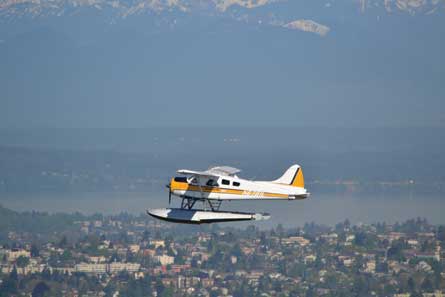 |
|---|
© John Croft |
Typical cruise speed for the Beaver is about 100kt |
After a short taxi, turning the seaplane to the north, I advanced the power for our second take-off. Once airborne, with a large open stretch of lake ahead, I reduced the power and set up for another glassy water landing. With the Sun in the east I found our shadow, readily visible out of the left-hand window, helped provide additional height cues.
After splashdown I increased power and slightly reduced yoke back-pressure to keep the Beaver on the step. Taxiing on the step at 45kt was a pure hoot. The sensation during several large arcing turns was akin to that while piloting a fast speedboat. All the while the Beaver was in a wings-level attitude. Once headed to the north, I advanced the power and flew the Beaver off the water.
SHORT CRUISE
The short cruise leg back to Kenmore Air's seaplane base was at 500ft above ground level. Typical cruise speed for the Beaver is about 100kt with a total fuel flow of 91 litres/h. While the Beaver's fuel capacity of 525 litres makes 4h flights a possibility, Kenmore Air's longest scheduled run, from Seattle to Sullivan Bay, British Columbia, is only 2h 40min.
Calm winds allowed us to set up for a straight-in landing on the lake. At idle power, with the water rudders extended, we taxied into Kenmore's base and slowly approached the dock. Nearing the dock I shut the engine down. Looking out of the left window I was able to guide the aircraft in, putting the left float alongside the dock. A ramper on the dock grabbed the wing strut and tied us off.
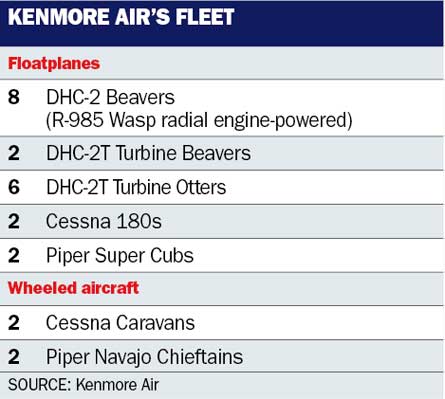
Sitting at the dock I thought my seaplane experience was over, but Gowey graciously offered the opportunity for a landing-pattern-only ride. Croft accompanied us on the 23min hop, in which I was able to do two full-stop landings as well as a splash and go.
The Beaver felt at home on floats, a robust workhorse designed to carry people and equipment to the far reaches of back-country. Sadly, air travel for most has become a mundane endeavour, an armchair in the sky.
Kenmore Air's operation is far from the ordinary and the operator's vintage Beavers and Otters would surely put a smile on your face as you motored over Washington's and British Columbia's scenic waters.
Footage from Mike Gerzanics' Beaver flight can be seen at flightglobal.com/kenmore
Operator Profile/John Croft/Seattle
TAKING THE SCENIC ROUTES
Book a flight online with Seattle-based floatplane operator Kenmore Air and get a refreshing break from the usual airport slog.
Along with a furry greeting from airport dogs Blue and Miley, Kenmore's customers are handed a number that matches a "gate" out on the Lake Washington dock, where a variety of float-equipped de Havilland Otters and Beavers in yellow livery bump lazily off rubber stand-offs made of old tyres.
In this case, the gate is a picnic table.
"People say 'vacation starts here'," says Kenmore president and general manager, Todd Banks, whose grandfather started the company in 1946 "with two friends and one airplane". Kenmore, which earned about $11 million in revenue in 2010, is still privately held by Banks, his mother and an uncle, and continues to embody sense of adventure and mystique that has made floatplanes synonymous with the Pacific Northwest.
The company this year has a fleet of 24 aircraft, 20 of which are floatplanes operating daytime visual flight rule services out of its headquarters on Lake Washington, a 30min drive north from Seattle, and at Lake Union, a few kilometres away from Seattle-Tacoma international airport.
Along with six turbine-powered DHC-3T Otters, Kenmore's floating fleet is made up of eight radial engine-powered, six-passenger DHC-2 Beavers, two eight-passenger turbine-powered Beavers, two Cessna 180s and two Piper Super Cubs, used to pass on seaplane skills to the 65 or so pilots a year who pay $1,700 to undergo the four-day training course.
Four wheeled aircraft - two Cessna Caravans and two Piper Navajo Chieftains - carry about 40,000 passengers a year rain or shine to destinations with runways, largely from Kenmore's hub at Boeing Field.
The floatplanes carry about 60,000 passengers every year from late May until the end of September, most of them departing from Lake Union.
Customers might be travelling to vacation homes in the islands, heading out to meet their boats, travelling to the big city for medical appointments, or taking a narrated scenic flight that includes the majestic white slopes of Mount Rainier, which stands guard over the city of Seattle.
Banks says prices can be as low as $79 one-way for the 105km (55nm) hop to the San Juan islands on the web (driving might take 5h), and might run as high as $700 for a round-trip to outlying destinations such as Sullivan Bay in British Columbia.
The family formula permeates the operation from top to bottom, particularly for pilots who are entrusted flying roughly 100,000 passengers a year in the Part 135 operation. Banks says a typical path to the floatplane cockpit starts in the yard, where most of the floatplanes are hauled out of the water nightly and returned there at sunrise the next day, a nod to the corrosion threat even in a freshwater lake.
Size matters for the Otters, however: the 10-passenger singles stay in the water overnight. Kenmore is landlord to about 40 other floatplanes, the owners of which rent storage space. Banks says chief pilot John Gowey started working there in college, driving the forklift and fuelling aircraft.
The company typically has 165 employees year round, and peaks at around 200 in the summer season. The 40 pilots on staff work five days a week and log four to six flights a day, says Banks. Weather forces flight cancellations around 12 times a year, mostly in winter, and fog causes delays about a dozen times a year in the summer, he adds.
Gowey and assistant chief pilot Chuck Perry put schedules together in the afternoon for the next day. As with airlines, there are a fixed number of seats to sell before capacity is sold out.
If maintenance removes an aircraft from service, Banks can lease a number of Beavers on an hourly basis to augment the Kenmore fleet, he says.
The service department is crucial in the business, not only because of high hours, aircraft age and relatively harsh corrosion environment, but also because 20% of the company's revenue comes from third-party maintenance through its Part 145 repair station.
Sales of its more than 100 Federal Aviation Administration-approved parts manufacturer approval (PMA) parts to other Otters and Beavers are "a big reason we're still here", says Banks, noting that the type certificate holder for the Otter and Beaver, Viking Air, is the alternative and prices are higher there.
More PMAs are in the works, with 15-20 in process at the FAA waiting for approval.
Along with 100h, annual inspections and overhauls of the company's Pratt & Whitney R-985 Wasp nine-cylinder radial engines for the Beavers - a task that needs to be done about every two years, given the 1,600h time between overhauls - Kenmore also rebuilds piston- and turbine-powered Beavers for customers, sometimes at a cost of about $1 million.
Two customer overhauls are under way at present, says Banks, adding that the projects take about 5,000 man-hours to complete. The company uses StandardAero for overhauling its turbine Pratt & Whitney Canada PT6 engines that power the Beaver and Otter.
In addition to parts, Kenmore also makes and sells about 12 new sets of floats a year for Beavers and Super Cubs, designs it acquired with its purchase of Edo in 1998 and now builds in through an AVIC subsidiary in China.
"We tried to do it here, but there was too much labour in it," says Banks. "We supply the materials; the price and quality is better in China than what we can do here."
An in-house avionics shop takes care of the Kenmore fleet, but also completes six to seven major avionics projects for third-party customers every year.
Banks says demand continues to hover around 2009 and 2010 levels, which is down about 20% from 2008 and before.
"We've had to be aggressive managing costs," he says. An interline ticketing agreement signed with Alaska Airlines last year has generated "a slight bump" in demand, but less than Banks had expected.
"It's slower than we thought, but moving in the right direction," he says, adding that Kenmore flies "a lot of" Alaska's MVP Gold status customers.
Banks says that getting its reservation system computers "to talk" to Alaska's system was the toughest part of launching the joint effort.
Like the water, Kenmore's business has its ebb and flow, season to season and year to year.
"We don't have one," says Banks, when asked about his business plan.
"We found that we're better off just being small enough to be nimble enough to move on things when we need to move."
Source: Flight International


